1930s: As Was the Fashion of the Time
by Suzette Davidson, First published for the May/June 2012 issue of Finery

During the 1930s, tailored suits and day dresses made a strong impression as they became more accessible for day wear via “off-the-rack” clothing manufacturing. The industry was changing with the development of new synthetic materials and dyes. In addition, the zipper, or slide fastener, was first being used in trousers for men in the designs of Elsa Schiaparelli in Paris. However, it was not widely used in women’s wear until the 1940s.
Much of the day wear of this era featured bias cut fabric, which molds the dress closely to the body, hugs the hips, and stretches with movement. Sleeves were narrow and armholes small by today’s standards. Bust lines tended to be low. Waistlines were often slightly below the natural waist or just above it, extending the silhouette to emphasize a longer body. These garments are more curve-revealing than dresses were in the 1920s, which often had no waistband. The late 1930s saw wider shoulders, foreshadowing the fashions of the 1940s.
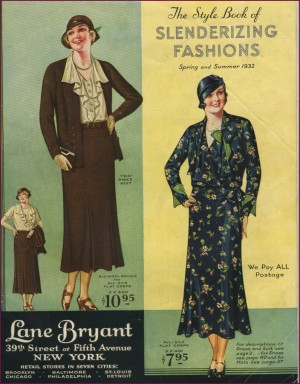
Undergarments in the 1930s emphasized a combination of the soft, long-line corset and bra, with elasticized panels to “restrain” a woman’s stomach and hips. Synthetic materials such as a heavy synthetic rubber or neoprene, invented in 1931 by Julius Nieuwland, and the development of nylon by Wallace Carothers, brought new options to the manufacture of garments. 1930s brassieres were made to “support and lift the bust” and were much nearer to the modern bra than the 1920s cloth bandeau top that was worn under sheath frocks. The fashion in the 30s was to emphasize the curves rather than flatten them. By 1938 there were entire factories devoted to producing nylon, the world’s first fully synthetic fiber.
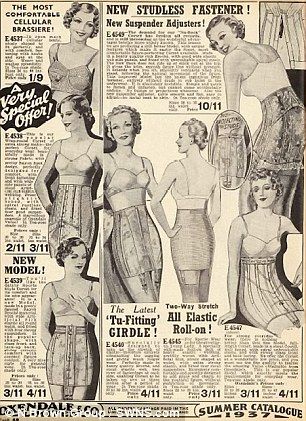
The style in bathing suits in the 1930s was the knitted one-piece costume for both men and women. The waist and bust of women’s suits are accentuated, and both women’s and men’s bathing costumes had “modesty skirts” that covered the top of the thigh and lower hip. Both suits had a top section with shoulder straps, like a modern unitard. It wasn’t until the end of this 1930s that women began to wear two-piece bathing suits and men began to wear trunks.
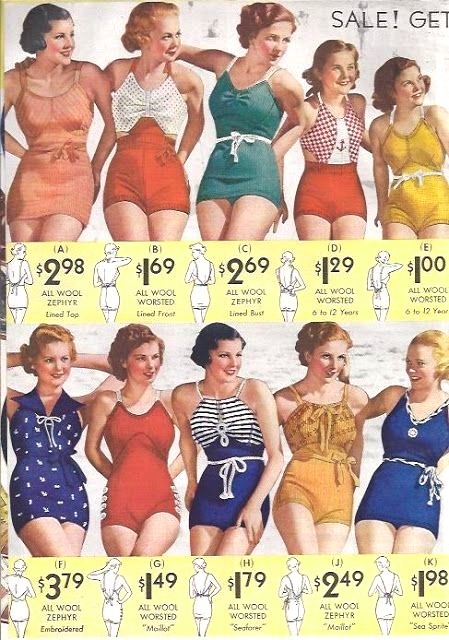
The Deco era brought a lot of geometric shapes, metallic tones and embellishments to day wear in the form of bead work, fabric panels, buckles on belts and angled designs of contrasting tones on handbags and jewelry. Affordable costume jewelry in semi-precious stones, glass and marcasite became available in the popular garment catalogues, like Sears. In addition to nylon and neoprene, other synthetic materials were being used to mass produce hardware for accessories, like belt buckles and buttons made of early polymers and synthetic rubber.
The stitching patterns, cuffs and pocket details on a dress might feature a chevron shape, if the fabric was a single color and had no print. The drape on the bias might show off the fabric with a complicated pleating pattern that flattered the figure. Details like this reflect the 1930s aesthetic. Shops that sold ready-to-wear separate garments usually offered tailoring or alterations services or could refer clients to local shops that could assist them, and shoe stores knew the local cobblers.
On American movie screens and in magazines created for moviegoers, these developments in women’s fashions may be seen in paper dolls such as this “Movie Dressograph” depicting actress Helen Mack. Helen models a versatile selection of frocks, changing hats, collars, belts, wrap tops, shoes and other accessories to make a variety of looks.
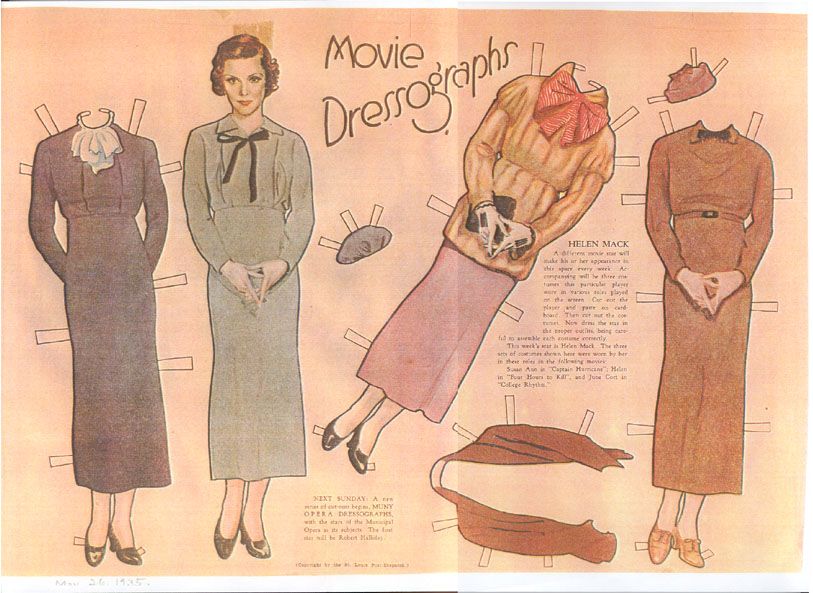
1930s daywear offers a wide range of options for one to make garments; one that is cost effective yet modern in fit, shape, fabric and color. The attention to detail in workmanship in ready-to-wear garments shows a respect for traditional tailoring and explores Deco age materials for creative embellishment.

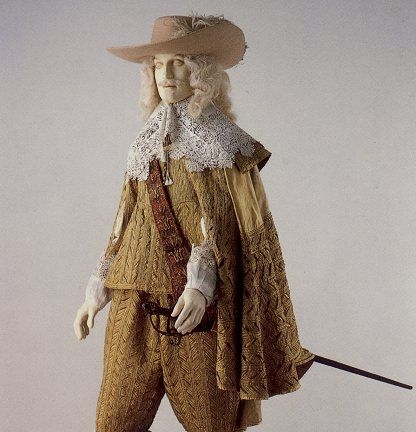
Leave a comment